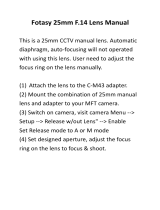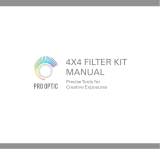
2
T
T
a
a
b
b
l
l
e
e
o
o
f
f
C
C
o
o
n
n
t
t
e
e
n
n
t
t
s
s
INTRODUCTION ..........................................................................................................................................................4
Warning...................................................................................................................................................... 4
ASSEMBLY .................................................................................................................................................................... 8
Setting up the Tripod.................................................................................................................................. 8
Attaching the Equatorial Mount................................................................................................................. 9
Attaching the Center Leg Brace ............................................................................................................... 10
Installing the Counterweight Bar.............................................................................................................. 10
Installing the Counterweights................................................................................................................... 11
Attaching the Slow Motion Knobs........................................................................................................... 11
Attaching the Telescope Tube to the Mount............................................................................................. 12
Installing the Finderscope......................................................................................................................... 13
Installing the Visual Back......................................................................................................................... 13
Installing the Star Diagonal...................................................................................................................... 14
Installing the Eyepieces............................................................................................................................ 14
Moving the Telescope Manually.............................................................................................................. 15
Balancing the Mount in R.A..................................................................................................................... 15
Balancing the Mount in DEC ................................................................................................................... 16
Adjusting the Mount................................................................................................................................. 16
Adjusting the Mount in Altitude............................................................................................................... 17
Adjusting the Mount in Azimuth.............................................................................................................. 17
TELESCOPE BASICS................................................................................................................................................. 18
Image Orientation..................................................................................................................................... 20
Focusing ................................................................................................................................................... 20
Aligning the Finderscope ......................................................................................................................... 21
Calculating Magnification........................................................................................................................ 21
Determining Field of View....................................................................................................................... 22
General Observing Hints.......................................................................................................................... 22
ASTRONOMY BASICS............................................................................................................................................... 23
The Celestial Coordinate System ............................................................................................................. 23
Motion of the Stars................................................................................................................................... 24
Latitude Scale........................................................................................................................................... 25
Pointing at Polaris .................................................................................................................................... 25
Finding the North Celestial Pole .............................................................................................................. 26
Declination Drift Method of Polar Alignment.......................................................................................... 27
Aligning the R.A. Setting Circle .............................................................................................................. 28
Using the R.A. Vernier Scale ................................................................................................................... 29
CELESTIAL OBSERVING.........................................................................................................................................30
Observing the Moon................................................................................................................................. 30
Lunar Observing Hints............................................................................................................................. 30
Observing the Planets............................................................................................................................... 30
Observing the Sun .................................................................................................................................... 31
Solar Observing Hints .............................................................................................................................. 31
Observing Deep Sky Objects.................................................................................................................... 31
Seeing Conditions..................................................................................................................................... 31
Transparency............................................................................................................................................ 31
Sky Illumination....................................................................................................................................... 31
Seeing....................................................................................................................................................... 32





















